FAQ
Yes. The mentioned items may be carried in the cabin baggage after an X-ray screening process, respectively, if needed, additional methods – explosive trace detection equipment included.
A medical certificate/ letter confirming the need to use drugs may be helpful, but it is not mandatory.
We recommend that, on your arrival at the security checkpoint, you report the possession of those drugs and medical devices to screeners, subjecting them to specific screening methods.
We recommend that, when arriving at the security checkpoint, you inform screeners about the metal implant.
A medical certificate or letter confirming surgery and attesting the metal implant may be useful during the screening process, but if the metal elements generate an alarm when passing through the walk-through metal detection equipment, the document does not replace additional screening required in such situations, including hand search or the use of explosive trace detection equipment at the screening area or in the specially designed cabin.
Shaving foam is assimilated to liquids, aerosols or gels (LAGs). LAGs may be carried in cabin baggage after screening only if they are individually packed at a maximum 100ml in volume/ equivalent in quantity, and all placed within a 1 liter clear zip-lock bag (its approximate size is 20X20 cm or 15X25). Thus, cosmetics falling within the category of liquids, aerosols and gels must fit in the same bag, since each passenger is allowed to carry one such bag.
Depending on the type of shaving machine, please note that it may be allowed in cabin baggage (only if the blade is embedded and cannot be detached), after carrying out the X-ray screening process, and if necessary, additional checks - explosive trace detection equipment included.
We recommend that, on your arrival at the screening area, you remove those containers of liquids, aerosols or gels from cabin baggage and present them separately to screeners for specific control.
Liquid medicine is allowed in cabin baggage after X-ray screening, and if necessary, after conducting further checks - including the use of explosive trace detection or liquid explosives detection equipment.
No special conditions are required when carrying the above-mentioned items in the cabin baggage, but we recommend that, on your arrival at the screening area, you report their possession to the screeners for subjecting them to specific control.
A medical certificate/ letter confirming the need to use drugs may be helpful, but it is not mandatory.
Fitness accessories such as foot/ ankle weights are usually allowed in the cabin baggage after X-ray screening, hand search and/or the use of explosive trace detection equipment. However, given the variety of this category of articles, if by shape or weight they can be used as blunt objects, they will not be allowed in cabin baggage
Camera/video camera tripod is, as a rule, allowed in the cabin baggage.
Nevertheless, depending on building particularities, there may be cases when the device is not allowed, especially if it has sharp points. Therefore, we recommend that, on your arrival at the screening area, you inform the screeners about that article, which will be subject to a specific control and analyzed whether accepted in the aircraft cabin.
Electronic cigarettes are allowed in cabin baggage after X-ray screening and, if necessary, additional checks, including the use of explosive trace detection equipment.
As for liquid containers used for electronic cigarettes, if they exceed 100 ml, they can only be accepted in hold baggage after the screening process.
If stored in containers of up to 100 ml, they can be carried in cabin baggage after X-ray screening, all fit within a 1 liter sealed clear zip-lock bag (its approximate size is 20X20 cm or 15X25). Thus, such items of liquid, aerosol and gels must fit in the same bag as each passenger is allowed to carry only one such bag.
Considering specific procedures at Romanian airports, prohibited articles in the cabin baggage discovered at the screening process are taken over by the airport administration and subsequently destroyed. In this context, for further details, you can refer to the airport administration.
Generally, walking sticks are allowed in aircraft cabin. Depending on their building features, there may be situations where these items are not allowed in the aircraft cabin, i.e. those with sharp edges or a metal handle similar to a tool designed to deliver a blow (e.g. hammer-style end).
If your item does not fall into the above situations, it can be carried in the aircraft cabin after the screening process. This process includes X-ray scanning and, if necessary, additional checks, including the use of explosive trace detection equipment.
The use of explosive trace detection equipment is a screening method by which samples of particles are taken from the surface of passengers’ skin or garments, which are subsequently analyzed with a device that establishes the presence of explosive substances. This method can be applied both to clarify the result of alarms or other screening methods, as well as randomly.
This method involves the use of neither substance, nor fingerprint or DNA analysis.



Social media